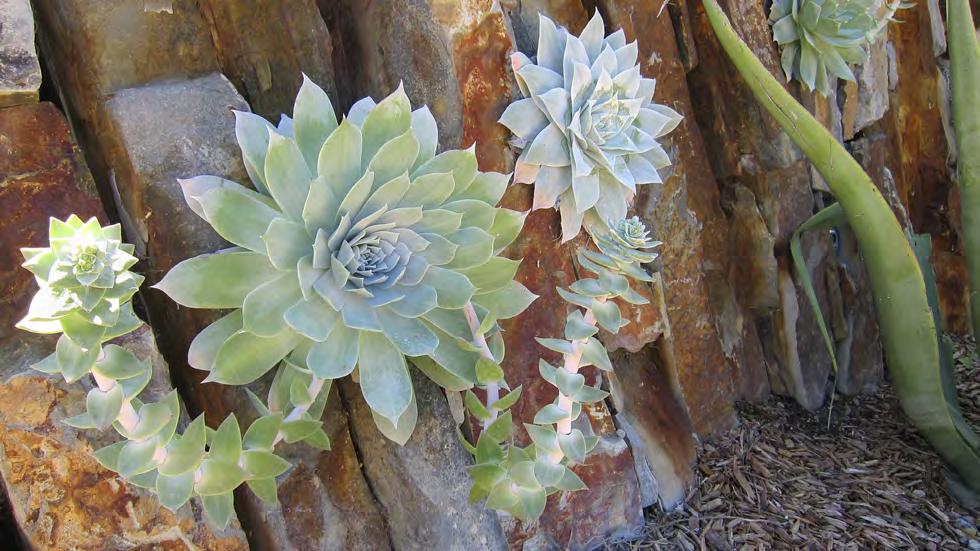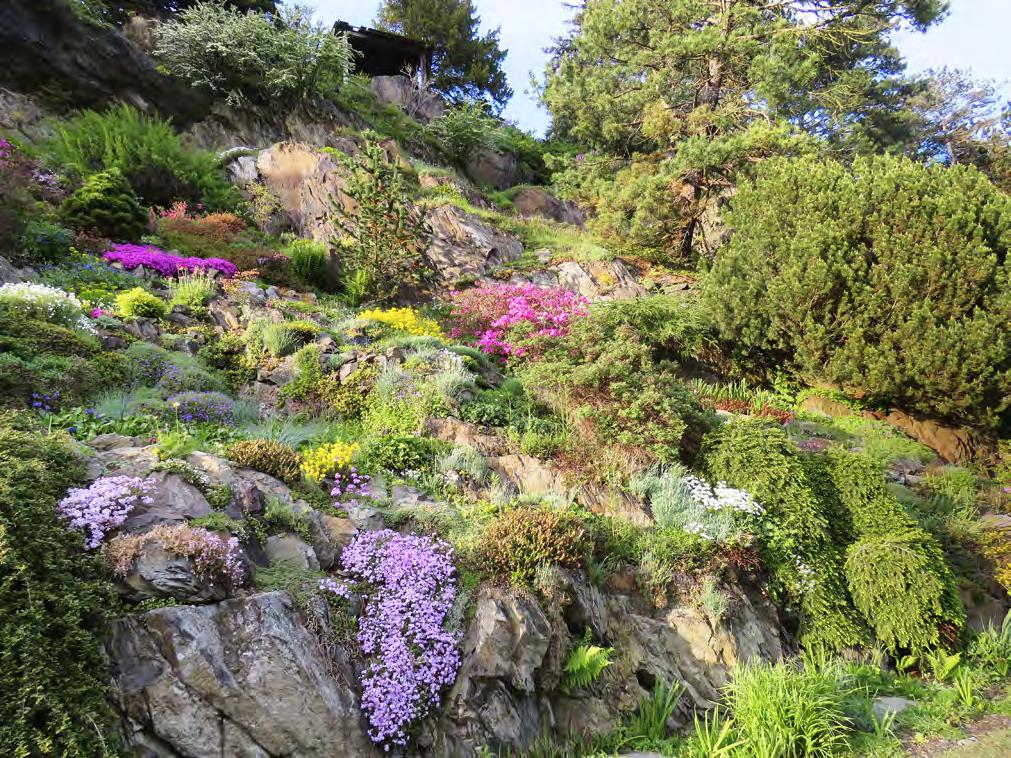
1 minute read
You don’t need a rocky outcrop. Find little niches where plants will grow.
parts of the United States, purpose-built crevice gardens have yet to take hold, Janicki says. But it might just be a matter of time, notes Kenton Seth, who wrote the 2022 book The Crevice Garden, a practical how-to for jumping aboard the trend, with coauthor Paul Spriggs.
“Crevice gardens are oddly universal, though they seem to resonate first with people in areas where it is naturally rocky,” says Seth. “Coastal and mountain settings already have a rich rock-work culture to grow from.” Not surprisingly, Colorado has been a trendsetter in purpose-built crevice gardens for almost a decade, he adds, with California close on its heels.
Small Talk
Gardeners who want to go for that rocky drama can start small by just burying some stones standing together, Seth suggests. “Don’t be afraid to mess up, and allow yourself ‘sandbox playtime,’” he advises.
You can even use cinder blocks and other recycled materials, says Daniel Feldman, senior manager of horticulture for the Natural History Museum of Los Angeles, which hosts a spectacular crevice garden in its Nature Gardens. “Look to nature for inspiration. See what grows on those steep slopes and in rocks,” he adds, noting that some of his favorite crevice gardens occur naturally—the Hanging Gardens in Zion National Park, Fern Canyon in Prairie Creek Redwoods State Park, and the rocky peaks of the Santa Monica Mountains.

The museum’s Living Wall crevice garden is home to dozens of plants that actually prefer growing out of a vertical surface—a trait that lends itself well to a small space or use as a divider, Feldman says. “As a spacesaving strategy it opens a whole realm of possibilities,” he explains. “Though it might be costly or time- consuming to construct, it’s a very unique type of garden and could be done in a relatively small space.”

If you’re thinking of adding a wall garden to your property, be aware that the building style is still relatively new, and it requires technical expertise to ensure that the wall won’t collapse as the roots grow, Seth cautions. You’ll need to hire someone with experience, even if that means searching outside your local area, he notes. It’s also important to work with contractors and builders who “have an eye for aesthetics,” he says.
As water restrictions become the norm, more and more people are likely to open their minds to crevice gardening and to develop expertise in areas such as wall gardens. The crevice garden concept is “ideal at this moment in history, when everyone is looking towards ecological solutions to everyday problems—less water, fertilizer, and money, all while honoring the landscape itself,” says High Country Gardens’ Mueller.










